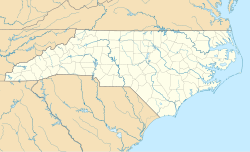상대 게인 어레이
Relative Gain ArrayRGA(Relative Gain Array)는 다변수 프로세스 제어 시스템에 [1]가장 적합한 입출력 쌍을 결정하기 위해 널리 사용되는 전형적인[citation needed] 방법입니다.이것은 많은 실용적인 개방 루프 및 폐쇄 루프 제어 애플리케이션을 가지고 있으며 안정성 및 견고성과 [2]같은 많은 기본적인 정상 상태 폐쇄 루프 시스템 특성 분석과 관련이 있습니다.
정의.
비선형 G로 표현되는 LTI(Linear Time-Invariant) 시스템이 주어졌을 때 상대 이득 배열(RGA)은 다음과 같이 정의됩니다.
여기서 \는 두 행렬의 요소별 Hadamard 곱으로, G {\에도 전치 연산자(공역 없음)가 필요합니다.각 i j, j, j \ {는 불변 단위입니다bariant) i에 대한 j(\i의 의존성 측정.
특성.
다음으로 [3]RGA의 선형 대수 속성을 나타냅니다.
- () \ \ ( \ { )의 각 행과 열의 합계는 1입니다.
- 비스듬한 대각 D E(\displaystyle \{E의 경우 \ {
- P {\및 {\의 경우, P ( ) ( G) \ \{ P } \ ( \ { ) Ph
- 마지막으로 ( -) ( ) ( )( \ ( \ } ^ { - 1 ) = \ ( \ {} = \ { \ { { }} = \ Phi { }} ) 。
두 번째 속성은 G의과 0이 아닌 스케일링에 RGA가 불변함을 나타냅니다RGA는 다른 입력 및 출력 변수에서 단위를 선택할 때 불변합니다.세 번째 속성은 RGA가의 또는 열의 순열과 관련하여 일치함을 나타냅니다(\style
일반화
RGA는 G의 역수를 Moore-Penrose 역([4]의사역)으로 대체함으로써 G(\displaystyle \mathrm {G가 단수(예: 비제곱)인 경우에 사용하기 위해 일반적으로 일반화되어 있다.단, 무어-펜로즈 유사 역행은 RGA(위의 #2)의 임계 스케일 불변성 특성을 보존하지 못하기 때문에 일반화된 단위 일관성(UC) 역행성을 사용해야 [5]하는 것으로 나타났다.[6]
레퍼런스
- ^ Bristol, E.H. (1966), "On a new measure of interaction for multivariable process control", IEEE Transactions on Automatic Control, 1: 133–134, doi:10.1109/TAC.1966.1098266
- ^ Chen, Dan; Seborg, D.E. (2002), "Relative Gain Array Analysis for Uncertain Process Models", AIChE Journal, 48 (2): 302–310, doi:10.1002/aic.690480214
- ^ Johnson, C.R.; Shapiro, H.M. (1986), "Mathematical aspects of the relative gain array (A◦A−T)", SIAM Journal on Algebraic and Discrete Methods, 7 (4): 627–644, doi:10.1137/0607069
- ^ van de Wal, M.; de Jager, B. (2001), "A review of methods for input/output selection", Automatica, 37 (4): 487–510, doi:10.1016/S0005-1098(00)00181-3
- ^ Uhlmann, Jeffrey (2019), "On the Relative Gain Array (RGA) with Singular and Rectangular Matrices", Applied Mathematics Letters, 93: 52–57, arXiv:1805.10312, Bibcode:2018arXiv180510312U, doi:10.1016/j.aml.2019.01.031, S2CID 44092817
- ^ Qasim Al Yousuf, Rafal; Uhlmann, Jeffrey (2021), "On Use of the Moore-Penrose Pseudoinverse for Evaluating the RGA of Non-Square Systems", Iraqi Journal of Computers, Communications, Control & Systems Engineering, 3 (21): 89–97, arXiv:2106.09766, doi:10.33103/uot.ijccce.21.3.8, S2CID 235485155


 두 행렬의 요소별
두 행렬의 요소별 
 불변 단위입니다
불변 단위입니다
 의존성 측정.
의존성 측정.







